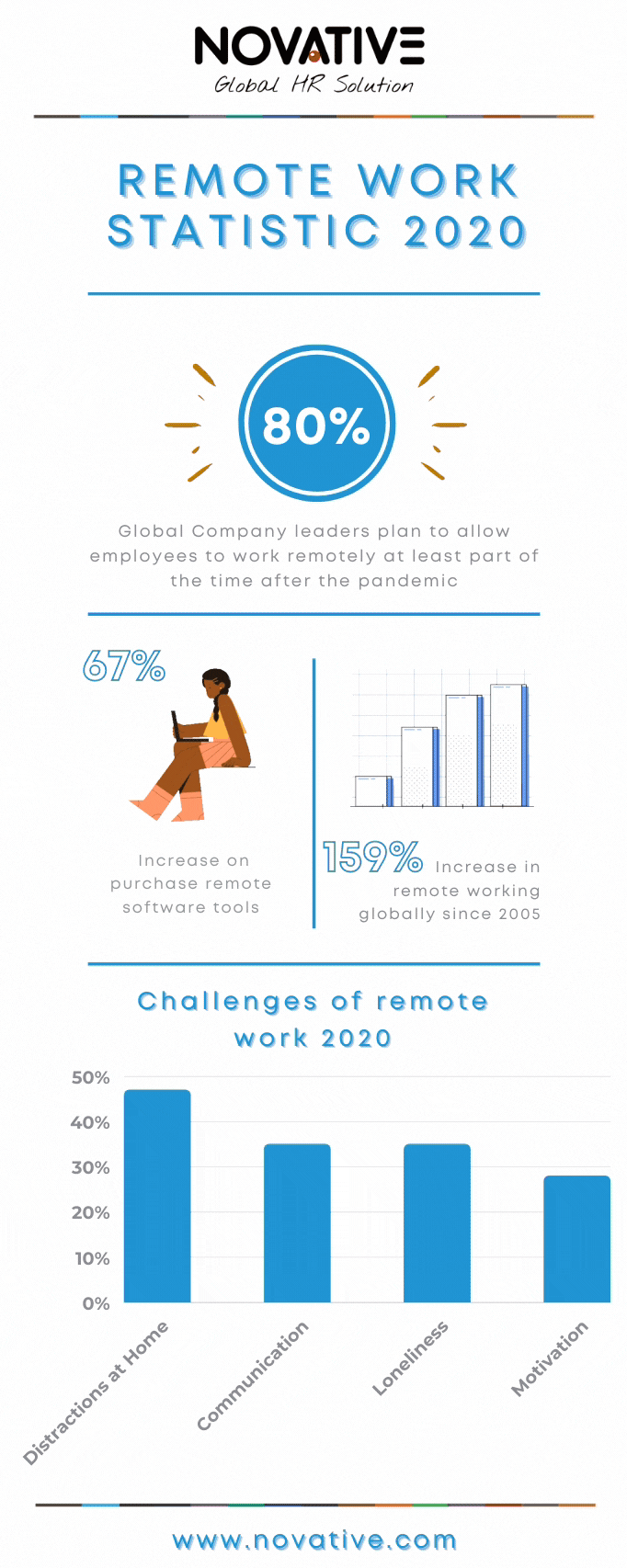Remote Working Statistics 2020 Infographic!
Remote working statistics 2020. In 2020 there was a big shift into the world of remote working. COVID-19 lead us to adapt the remote work model, which for many sectors was a new concept. It had never been required on such a global scale across all industries before.
To learn what could help us in 2021 when it comes to remote working, we have created an infographic of different statistics based on polls and research from 2020.
Remote Working Statistics 2020 Key Findings
It seems that even after the pandemic remote working will continue. A Gartner survey of company leaders found that 80% plan to allow employees to work remotely at least part of the time after the pandemic, and 47% will allow employees to work from home full-time.
Digitalisation has proved crucial for remote working. Statista reported that as of April 2020, 67% of organizations increased their spending on remote tools and web conferencing software. Companies have been quick to understand that agile software is key for success remote working.
Remote working was on the rise before the pandemic. The arrival of COVID-19 seemed to speed it up. Across the globe, working from home and remote locations has grown 159% since 2005.
It is worth noting the challenges that remote working can bring. Statista survey highlighted that 47% of employees found distractions at home a problem, 35% struggles with communication, 35% were lonely and 29% found it hard to get motivated.
The statistics tell us how remote working is developing. What is essential to achieve successful remote working and what challenges employees face. If you need some tips and advice on remote working head to our How to Master Remote working page.








I enjoyed reading your blog post. Lots of crazy comments on this internet site Keep up the nice work. Longing for your future post.